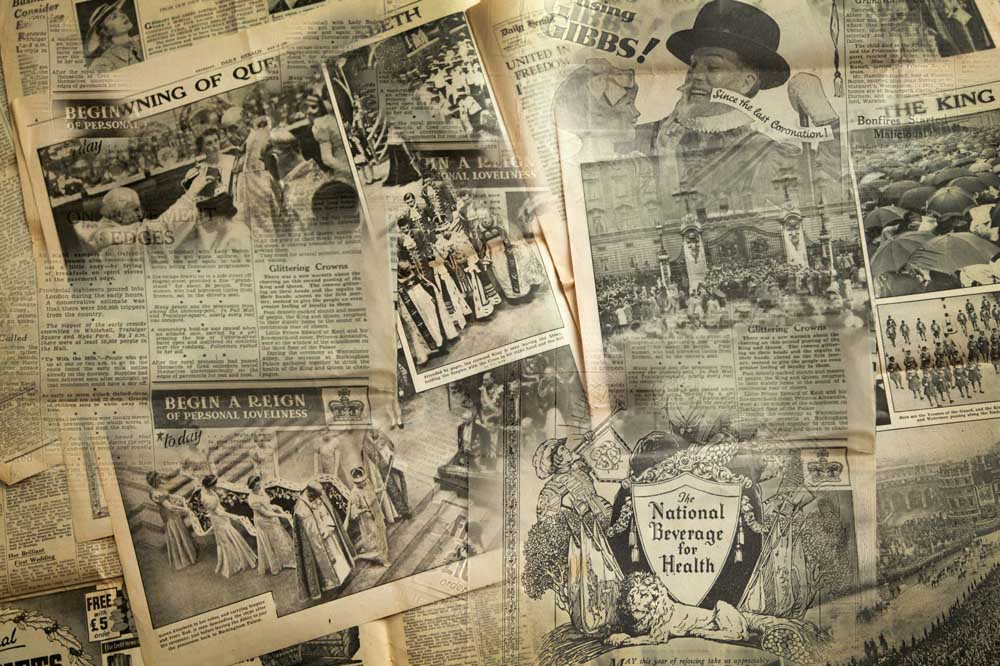Yesteryear: Wandering papa porky proves prickly problem
Published 12:00 am Sunday, January 15, 2023

- Yesteryear
100 Years Ago
For the week ending
Jan. 21, 1923
Episcopal parish house being built
Construction of the foundation for the new Episcopal parish house, on the corner of Wall street and St. Helen’s place, is under way, with the prospect that the building will be completed and ready for occupancy about March 1. It will cost $5,500. John J. Cunningham has the contract.
The parish house will be built of lava rock, trimmed with black rock. The plans, drawn in the office of Thomas and Thompson, call for a rather rustic type of building. The auditorium, a kitchen and a rector’s study will occupy the main floor, with a furnace in the basement.
Bend found In serious state
“It is quite obvious that Bend is in a bad state,” said Judge T.E.J Duffy from his bench in juvenile court this morning. “And it is equally evident that the town needs a thorough cleansing. But we must work from the bottom up to get results, to give the citizens of this community the ‘first aid’ treatment they desire.”
Three girls, and possibly five, will be escorted on tonight’s train for various homes of correction in the state. All of them are involved in the local delinquent scandals, which have aroused Bend to the need of investigating the actions of the city’s youth. Other girls and boys are likely to follow the five girls already committed, officials intimated today.
One of the high school boys appearing before Judge Duffy this morning admitted on the stand that he had bought whiskey for months from men and boys. The boy, 17, was paroled to his guardian on condition that he be sent to school outside of Bend.
Bend schools can have gym board learns
Bend school district can become owner of the gymnasium building any time it wishes to, and the only condition attached to the gift will be the district’s assurance that it will accept. This was the report made by H.A. Miller at the regular school board meeting in detailing the results of a conference between the special directors’ committee, which he headed, and members of the Bend Holding Co., in which the title to the building is vested.
The district will in all probability be willing to accept the gift of the $80,000 structure, erected in 1917 and 1918, but took no action on Miller’s report. And no action is likely until definite plans are under consideration for the construction of a new high school. The American Legion at present has the management of the gymnasium, and according to statements made by board members the organization of world war veterans could continue to make the building its headquarters after the property was taken over by the district. When this is done, it is planned to make a true community center of the gymnasium in addition to its use for school purpose.
75 Years Ago
For the week ending
Jan. 21, 1948
Motorcycle club has treasure run
Lester Sterling and Bob Rief placed first in the treasure run for motorcyclists, held Sunday afternoon under sponsorship of the Cascade Mototcycle club. Mr. and Mrs. Ralph Moores placed second, and Larry Holman was third. The first-place winners found the required “treasure” in 40 minutes.
Thirteen articles were requested, including such items as an ice cube, two gray hairs over six inches long, three chicken feathers, one five-inch noodle and a picture of President Truman.
Boys town takes Bend youth as case comes to end
Cecil Snyder, 11-year-old schoolboy who admittedly put strychnine in lunch-box sandwiches that caused the death of his father, is on his way to a new life today. He left this afternoon for Boys Town, Nebraska. He was heard in juvenile court not as an accused murderer, but as a dependent child.
Cecil’s acceptance as a student as Father Flanagan’s famous village for boys with serious rehabilitation problems was achieved largely through the efforts of local organizations, officers and interested persons who felt that such an institution would provide an ideal background for character building, as well as an interesting, personalized program of education and physical development.
Christmas Eve, members of the Bend Eagles lodge circulated a petition requesting Father Flanagan to accept the boy as a charge. Howard S. Page of Coeur d’Alene, Idaho, northwest representative for Boys Town, made a plane trip to the Nebraska village to present the case history to the board of directors. Page who was in Bend today to accompany Cecil to the school, said that the youngster was given the number-one position over 3,500 boys who are on the institution’s waiting list.
Cecil’s lawyers, Duncan McKay, of Bend, and George Brewster, of Redmond, expressed satisfaction at the decision. Cecil was dressed in his best outfit- new slacks, a two-tone sports jacket and a jaunty fedora. With an effort at light-heartedness, with just a touch of surliness, he told Mrs. Harry Johnson, matron in the county jail, that he was a little uncomfortable in the new clothes, and said he was “going back upstairs’ to get his old ones. Mrs. Johnson assured him that he should “look his best” for the trip to his new home.
50 Years Ago
For the week ending
Jan. 21, 1973
Wandering papa porky proves prickly problem
Veterinarians and biologists have various ways of handling harmful animals safely. They grab snakes behind the head to avoid being bitten and they pick up crabs by the body to keep from being pinched. But how does one handle a porcupine so as not to get stuck?
Very carefully,” according to the punch line of an old joke, but Jim Anderson, Sunriver naturalist, and Vic Barnes, Bend biologist with the U.S. Bureau of Sport Fisheries and Wildlife, learned yesterday that it was more truth than fiction.
They wrestled about half an hour with a 17-pound prickly papa porky before their anesthetic put him to sleep. The object of the tussle was to put a radio transmitter around the animal’s neck. After three or four doses of Metofane, a veterinary anesthetic, and a couple dozen quills in both of their hands, Anderson and Barnes finished the job.
Porky can thank Mrs. Don Johnson for all of the trouble the two men caused him. She captured him on her back lawn Sunday night. The Johnsons live about seven miles southeast of Bend, off Arnold Market Road.
After the animal was safely inside a cage, Mrs. Johnson called Anderson at Sunriver. He called Barnes and they decided to go to her home to put a transmitter on Porky. Anderson then released him at the northern end of Sunriver property, away from any development. He plans to follow Porky’s movements through the area with a radio direction finder.
“All I’m trying to do is get rid of the porcupine,” Mrs. Johnson said. She added that she didn’t want to kill him, so she called Anderson. She says this is the second one she has captured. She released the first one in the forest.
Mrs. Johnson says Porky and his friends are attracted to her home because of the lawn, but she doesn’t want them around because they girdle the trees (eat the bark around the trunk, which often kills trees) and might injure the dog.
“We could kill the animal,” Anderson said, “but what do we learn then — how quick a porcupine dies? We’re going to put a radio on him and see what will happen to him.”
25 Years Ago
For the week ending Jan. 21, 1998
Drake Park giants face saw
As snow flurries swirled and ducks waddled by, two Bend parks officials strolled through Drake Park, sizing up a painful mission: chopping down several dead or diseased trees, including three towering ponderosa pines.
The pines and five clumps of alder will fall to the saw this week.
Some smaller troubled trees in other parks also will be removed in coming days. But the sight promises to attract the most attention at 77-year-old Drake Park, the Bend Metro Park and Recreation District’s crown jewel and Bend’s front yard, of sorts.
“Boy, it hurts us,” said John Simpson, park services and development director. “It would help if we didn’t love them so much we stomped all over their little roots. Any tree in a highly used park like this is going to be put under a lot of stress they don’t face out in the forest.”
Two of the pines, north of the park’s footbridge, rise 75 feet or more and probably date back 150 to 200 years, said park district horticulturist Charlie Johnson.
In a more natural setting, occasional fires move through a forest, thinning tree stands. But in a spot long protected from such natural occurrences, a cluster of tall ponderosas, some less than four feet apart, brings added stress as the close neighbors compete for food, water and sunlight.
Compiled by the Deschutes County Historical Society from archived copies of The Bulletin at the Deschutes Historical Museum.






